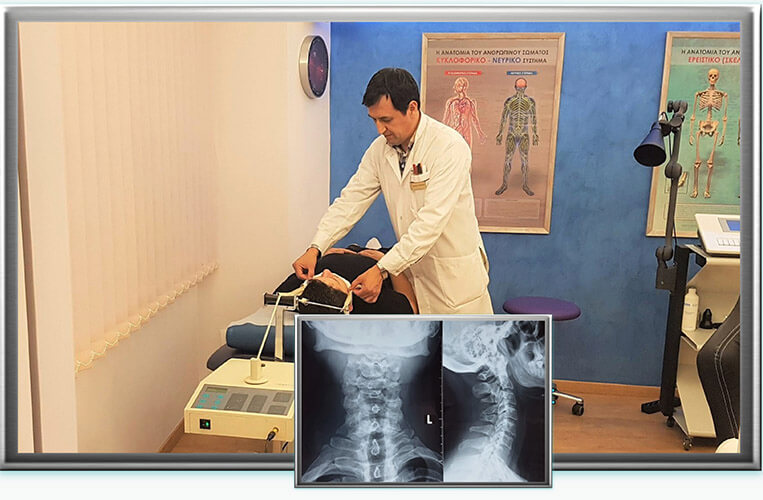ALEXANDROS BLETSAS PHYSIOTHERAPY CENTER
Cervical Spine Traction
Spine decompression therapy.
(Cervical Traction)

- Neck pain due to intervertebral disc herniation.
- Projection or prolapse of intervertebral disc.
- Nerve root compression (without aesthetic and motor weakness symptoms).
- Use of traction techniques for soft tissue injuries.
- Muscle tension headache.
- Degenerative vertebral arthropathy.
- Cervical Spine Straightening (use of cervical traction to reverse straightening).
- This technique could increase cervical lordosis by 1.7 mm of extension on the anterior surface of the cervical spine and by 0.5 mm on the posterior surface.
- Widening of the intervertebral space.
- Widening of the intervertebral foramen.
- Widening of the interarticular space.
- Reduction of intradiscal pressure.
- Direct or indirect production of analgesic and muscle relaxant effect.
- Stretching of the muscles, ligaments and bursae structures.
- The motor receptors in the area are affected, resulting in dissolution of the muscle spasm and pain relief.
- Facilitation of local circulation.
- Prevention of adhesions formation in the sheaths of the meninges and the spinal roots in the intervertebral areas.
- Prevention of adhesions formation in the apical joints bursae in a similar way.
- The patient should be in a proper, comfortable position and adequately informed about the process to eliminate fear.
- The supine position is the best option for cervical traction (placing a pillow underneath the cervical spine for more comfort).
- Careful control over the amount and duration of force that provides the optimal mechanical result, with minimal discomfort in the neck area and the temporomandibular joint.
- Improvement of cervical spine stiffness.
- Alleviation of compression and radicular effects.
- Analgesia
- Muscle relaxation
- Improvement of symptomatology.
- Improvement of mechanical conditions.
- Pre-traction heat therapy: Tecar therapy, gentle massage or use of other physical modalities.
- The patient should actively participate in the relaxation process and overall treatment for better results.
- Evaluation
- First application must be made by hand to safely evaluate the therapeutic effect.
- Evaluation of therapeutic effect.
- 1st treatment must include only mild traction application.